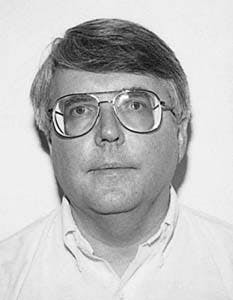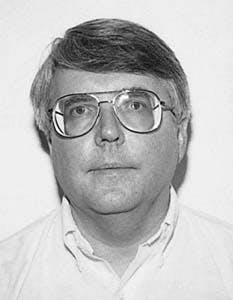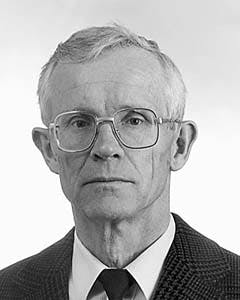Richard H. Shea
Scandpower Inc.
HoustonJon Rasmussen
Scandpower A.S.
Kjeller, NorwayPaal Hedne
Sintef
TrondheimDag Malnes
Consultant
Oslo
In several predictive methods commonly used for wet-gas pipeline holdup, the magnitude of errors varies greatly.
Comparison of these methods and their errors, given in this article, indicate that correlation-based methods should not be used for holdup prediction.
Mechanistic models, on the other hand, yield better predictions of liquid holdup for hilly terrain pipelines.
Test data from the Sintef Multiphase Flow Laboratory, Trondheim, Norway, however, indicate that even the best methods can give errors on the order of 40% for certain ranges of rates.
For wet-gas systems, liquid holdup is a function of gas velocity and angle of inclination. At low rates, the liquid holdup may increase by a factor of 100 or more as the inclination angle changes a fraction of a degree.
To illustrate the magnitude of errors in holdup prediction, the predictions of five methods were compared to data from the Sintef laboratory for conditions similar to those found in wet gas lines through hilly terrain.
Good prediction of the liquid holdup for wet-gas pipelines is critical in the design of pipeline slug catchers. For hilly terrain pipelines, the liquid holdup also has a significant influence on the pressure-drop predictions at low rates.
Despite the importance of this parameter, many engineers in operating companies and contractors use methods which give extremely poor predictions.
Setup, instrumentation
During the past 10 years, thousands of large scale, two-phase flow experiments have been performed at the Sintef laboratory. These experiments have used several pipe configurations: inclination varying between -1° and +90°; diameters ranging from 0.1 m to 0.29 m (4-12 in.); and system pressures up to 90 bar (1,300 psi).
The laboratory has been operated with such hydrocarbon liquids as diesel, lube oil, and naphtha. Nitrogen has been used as the gas phase in all experiments.
The experimental series used in the comparison under discussion here was run in a steel pipe with a 0.189-m ID. The pipe geometry for these runs is shown in Table 1 [7558 bytes].
Separate measurements of volumetric flow rates are performed before the fluid phases are mixed at the inlet. At the outlet, gas and liquid are separated in a vertical dropleg and ground separator before they flow to the compressor and pump, respectively.
A total of 167 experiments were performed in the series presented here. The experimental matrix covers superficial gas velocities from 0.5 to 12 m/sec, and superficial liquid velocities of 0.005-0.1 m/sec.
System pressure was varied between 20 and 90 bar. Naphtha was used as the liquid phase. System temperature was held constant at 30° C. The observed flow regimes were stratified, annular, and slug.
The comparisons shown here concentrate on the liquid holdup measurements in the +1° section of the test loop. The experimental parameters are found in Table 2 [13090 bytes].
Fig. 1 [29939 bytes] shows the loop geometry and instrumentation.
The measured holdup in the +1° inclined pipe is reported as the average from the two broad-beam gamma densitometers mounted axially 886 m with respect to the mixing point.
One is measuring the liquid holdup in the upper half of the pipe, the other the lower half. The gamma densitometers are calibrated daily on gas and liquid filled pipe.
Results
The experimental tests showed very low liquid holdups (<<2%) for gas velocities greater than 2 m/sec, but the holdup for lower gas velocities was greater than 60% for some rates. this behavior mirrors observations in the field in which rapid liquid holdup buildup occurs during turndown rates.
The five holdup prediction methods investigated were: OLGAS;1 Oliemans;2 Beggs and Brill;3 Eaton;4 and Flanigan (OGJ, Mar. 10, 1958, p. 132). Comparisons of the liquid holdup predictions for each method vs. the measured holdups are shown in Fig. 2 [51631 bytes].
As seen in Figs. 2a [51631 bytes] and 2b [51631 bytes], the Beggs and Brill and Eaton predictions are poor. These methods grossly overestimate the liquid holdup at high rates and grossly underestimate it at low rates.
Eaton's method gives better predictions than Beggs and Brill, but the average error for Eaton is greater than 100%. Neither method properly accounts for angle of inclination dependencies or pressure effects.
Flanigan's is, strictly speaking, not a holdup-prediction method. It was developed as a means of estimating the pressure drop from hills for wet gas-pipelines. Because this pressure drop results from liquid holdup, this method has been included in this comparison.
As seen in Fig. 2c [51631 bytes], the liquid holdup for high rates is badly overestimated. The holdup for lower rates is higher than observed, but the predictions become better as the rate decreases.
The Oliemans method is a mechanistic model of stratified flow. Because most wet-gas pipelines are in stratified flow for most of their operating range, it has been used in some computer programs as the default option for wet-gas lines.
Fig. 2d [51631 bytes] shows the comparison of the Oliemans predictions with measured values. For high velocities, the predictions of this method are excellent.
Its performance for low velocities, however, is not good, and it doesn't predict very well the point at which the holdup increases rapidly.
It does, however, show the correct trends and clearly indicates the improved performance of mechanism models.
OLGAS is the steady-state prediction routine from the transient OLGA multiphase pipeline simulator. It is a mechanistic model which simulates each of the flow regimes in multiphase flow.
As OLGAS was tuned against data from the Tiller loop, which is near field scale, it extrapolates better to field conditions than earlier models. OLGAS is generally considered to be the state-of-the-art method for prediction of pressure drop and liquid holdup.
Fig. 2e [51631 bytes] shows the comparison of the OLGAS model against this data set.
The OLGAS predictions are much better than the other methods investigated. OLGAS shows the correct trends and models the data within acceptable limits.
On the other hand, OLGAS tends to overpredict the holdup for this data set, with errors of about 40% for some data points. Comparisons of OLGAS with other data sets show that its predictions may be a bit high for some sets, low for others.
Considerations
This comparison shows several significant points which should be considered in the design of wet-gas pipelines and their slug catchers:
- Correlation-based methods, such as Beggs and Brill or Eaton, should not be used for liquid holdup prediction. Their predictions are inadequate and do not show the proper trend with respect to gas velocity and angle.
- Mechanistic models, such as OLGAS, give much better predictions of liquid holdup for hilly terrain pipelines.
- Even the best methods, however, can give errors on the order of 40% for certain ranges of rates.
- For low rates, the liquid holdup is extremely sensitive to the inclination angle of the line. Angles as small as 0.05° can cause a significant increase in holdup.
- As a result, a good elevation profile of the line is essential to getting good holdup predictions. If the elevation profile is not precisely known, it is wise to introduce some artificial hills in the pipeline profile in order better to mirror reality.
- Wet-gas pipelines are usually in either stratified flow or annular flow. At very low rates, it is possible to get slug flow in the pipeline caused by the terrain.
- Modeling of the line using a transient simulator, such as OLGA, may be required to quantify the slugging potential of the line.
- Steady-state operation of the line at low rates may result in slug catcher sizes that are not economic. Frequent pigging at low rates may be a preferred solution for minimizing slug catcher size.
- At higher rates, it may be possible to run an equilibrium operation without pigging. A transient simulator should be used to model pigging, rate changes, and other conditions.
References
1. Bendiksen, K.H., Malnes, D., Moe, R., Nuland, S., "The Dynamic Two-Fluid Model OLGA: Theory and Application," SPE Production Engineering, May 1991, p. 171.2. Oliemans, R.V.A., "Modelling of Gas Condensate Flow in Horizontal and Inclined Tubes," 1987 ASME Pipeline Engineering Symposium, Dallas, p. 73.
3. Beggs, H.D., and Brill, J.P., "A study of Two-Phase Flow in Inclined Pipes," J. Pet. Technology. May 1973, p. 607.
4. Eaton, B.A., et al., "The Prediction of Flow Patterns, Liquid Holdup and Pressure Losses Occurring During Continuous Two-Phase Flow in Horizontal Pipelines," Trans. AIME (1967), p. 815.
The Authors
Richard H. Shea is manager of Scandpower Inc.'s Houston office. He worked for Mobil Oil from 1968 to 1993 as a process engineer and supervisor of process engineering for exploration and production projects.From 1978 to 1993, Shea coordinated multiphase flow activities for Mobil. He joined Scandpower in 1993 as manager of the Houston Petroleum Technology office.
Shea holds BS and MS degrees in chemical engineering from the Illinois Institute of Technology. He is a member of SPE.
Jon Rasmussen is supervisor of OLGA development activities in the Kjeller, Norway, offices of Scandpower A.S. He worked for the Institute for Energy Technology (IFE) 1962-1974 and for Scandpower 1975-1977. He returned to IFE 1982-1986 and then back to Scandpower in 1986. He holds a degree in nuclear reactor technology from the Technical University of Aachen. He is a member of the Norwegian Society of Chartered Engineers.Paal Hedne worked for Sintef 1986-1996 at the Sintef Multiphase Flow Laboratory in Trondheim, recently leaving to start his own company for software development and fluid-flow analysis. Hedne received an MS Engr. degree from the Norwegian Technical University machine department, Trondheim.
Dag Malnes worked for the Institute for Energy Technology 1965-1996, recently leaving to provide consulting services in multiphase flow in Oslo. He received his MS and PhD degrees in mechanical engineering from the Norwegian Technical University.
Copyright 1997 Oil & Gas Journal. All Rights Reserved.




